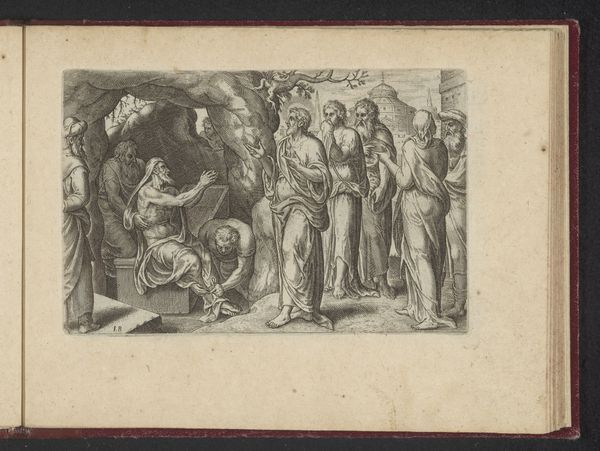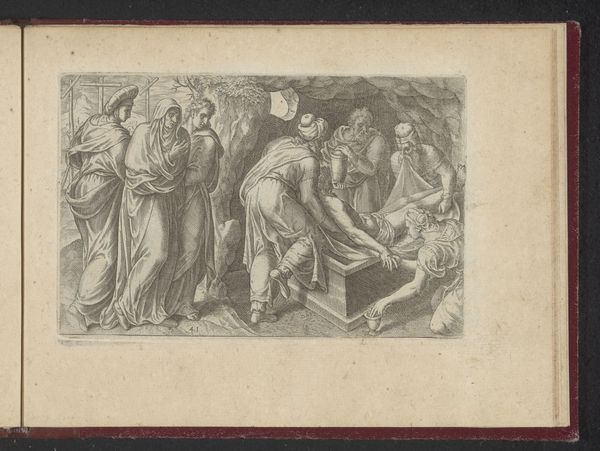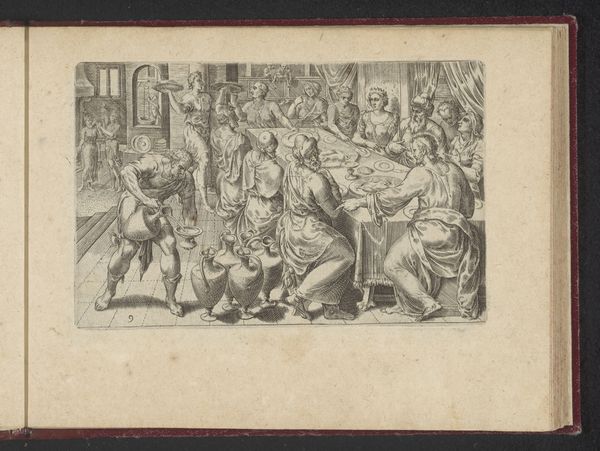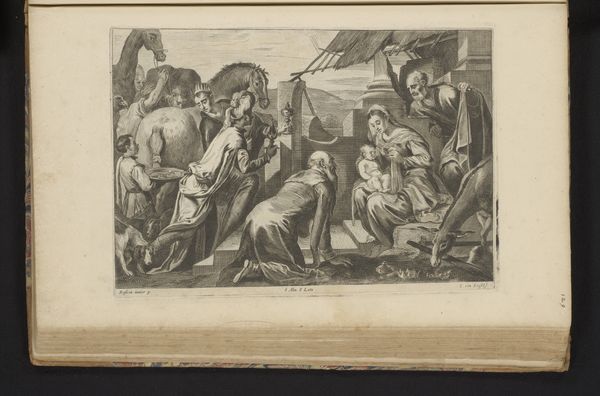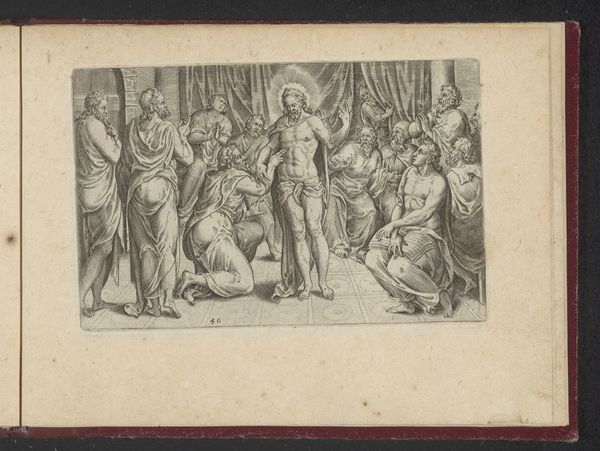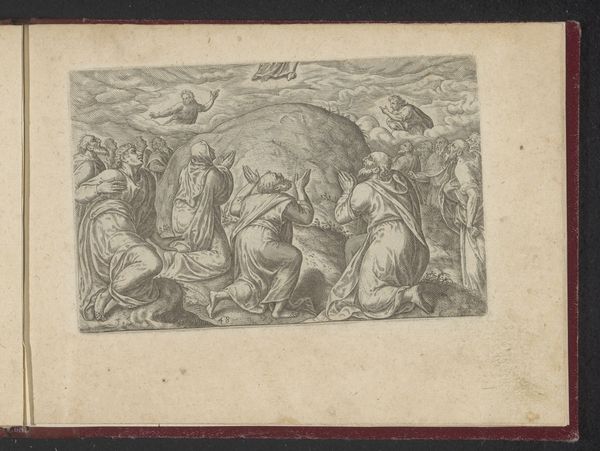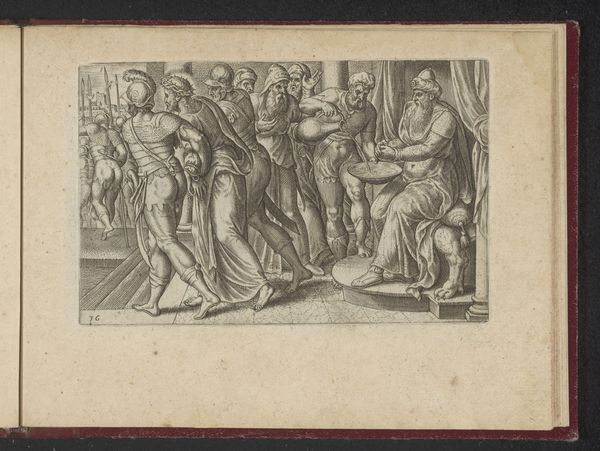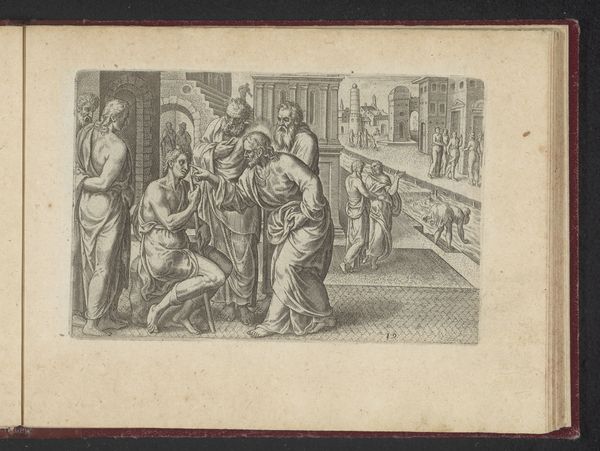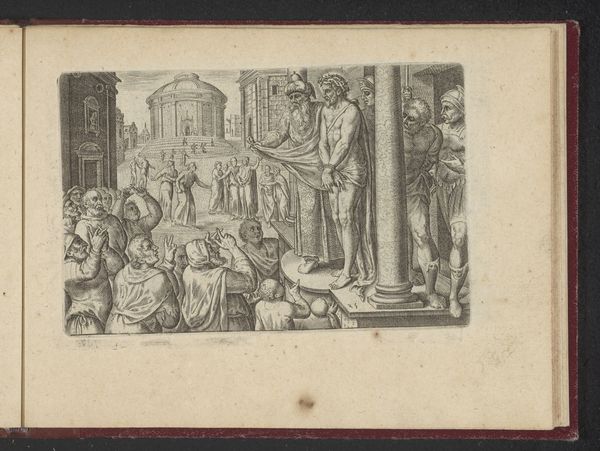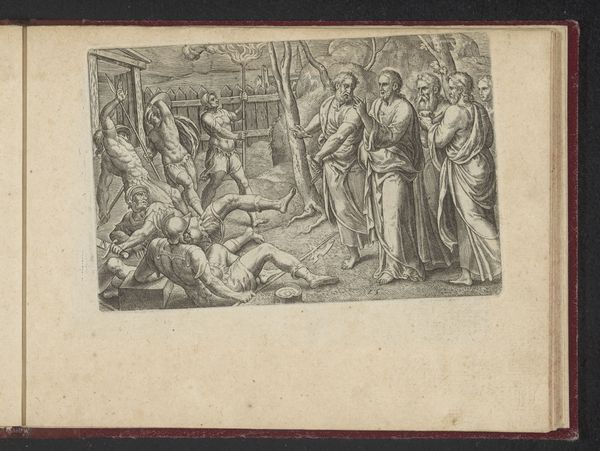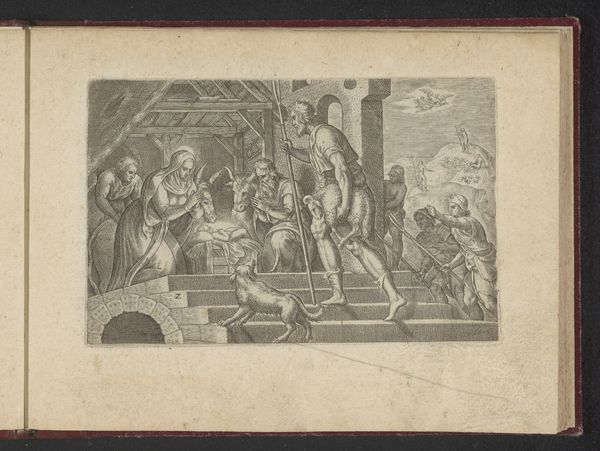
print, engraving
# print
#
mannerism
#
figuration
#
line
#
history-painting
#
engraving
Dimensions: height 92 mm, width 139 mm, height 137 mm, width 183 mm
Copyright: Rijks Museum: Open Domain
Curator: We're looking at Philips Galle’s "Kruisafname," or "Descent from the Cross," an engraving dating back to 1573, housed right here at the Rijksmuseum. Editor: Immediately, I’m struck by the density of line. It creates a dramatic, almost suffocating atmosphere. The figures seem to press against each other within a very shallow pictorial space. Curator: That dense line work is characteristic of Mannerism. And considering the political and religious climate of the time, especially the Counter-Reformation, this piece can be seen as a poignant reflection on sacrifice and faith. How does the image work to express these values in the 16th Century and for audiences today? Editor: Notice the almost exaggerated musculature, the twisting poses – it’s very much playing with the idealized human form, distorting it to create a sense of emotional turmoil. The figures aren't just mourning; they're embodying grief through their strained gestures and the way light catches on their bodies. Curator: And it's important to remember the context. The Netherlands were in the midst of the Eighty Years' War, struggling for independence from Spain. This scene, then, isn't just a religious one; it also becomes a symbol of suffering, resilience, and the hope for liberation within the sociopolitical frame of the revolt. Editor: I agree. And speaking of light, Galle’s strategic use of chiaroscuro pulls your eye right to Christ's body, doesn’t it? It’s this pale, still form amidst all the frantic energy of the living figures, almost forming a bright vanishing point. Curator: Yes! A lot of art historians consider Galle’s detailed output as playing a vital role in disseminating religious and moral ideas across Europe, shaping the visual culture of his time while creating dialogues on freedom, expression, and faith. What is fascinating is that it allows us to rethink issues surrounding faith, sacrifice and resilience for modern debates around race, class, and identity. Editor: Absolutely. Galle used established visual conventions with stunning technical precision to render not just a scene, but also a powerful emotional space, something to explore from many angles. Curator: The convergence of form and sociopolitical context creates new historical layers that are thought provoking and still speak to audiences today. Editor: Precisely. And from the close technical reading, we can see Galle created a visually rich tableau of faith, both intimate and monumental.
Comments
No comments
Be the first to comment and join the conversation on the ultimate creative platform.
